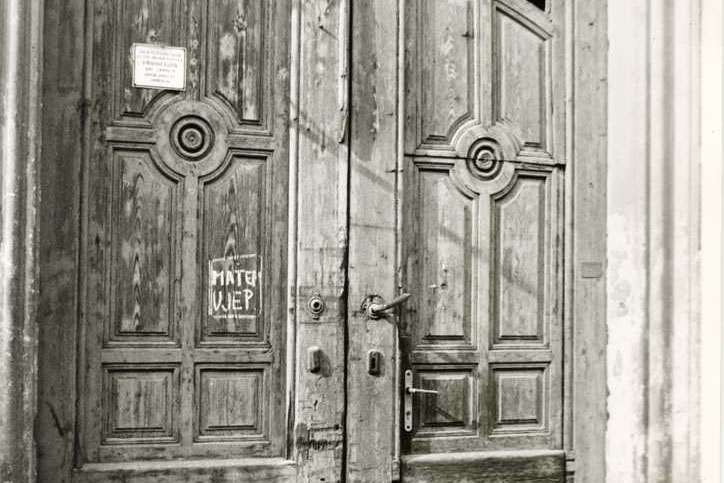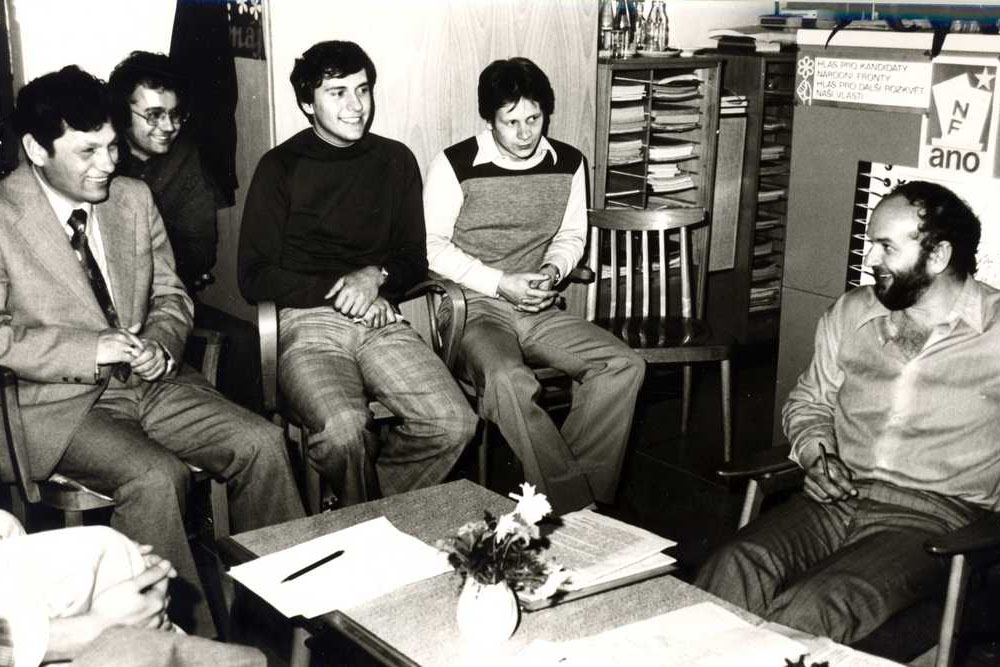|
2023
| |
| 149 |
N. Beneš, L. Brim, S. Pastva, D. Šafránek, E. Šmijáková. Phenotype Control of Partially Specified Boolean Networks. CMSB.
|
| 148 |
L. Brim, S. Pastva, D. Šafránek, E. Šmijáková. Temporary and permanent control of partially specified Boolean networks. Biosystems.
|
| 147 |
N. Beneš, L. Brim, O. Huvar, S. Pastva, D. Šafránek. Boolean Network Sketches: A Unifying Framework for Logical Model Inference. Bioinformatics.
|
| 146 |
M. Troják, D. Šafránek, S. Pastva, L. Brim. Rule-based Modelling of Biological Systems Using Regulated Rewriting. Biosystems.
|
|
2022
| |
| 145 |
M. Troják, D. Šafránek, B. Brozmann, L. Brim. eBCSgen 2.0: Modelling and Analysis of Regulated Rule-based Systems. CMSB 2022.
|
| 144 |
L. Brim, S. Pastva, D. Šafránek, E. Šmijáková. Temporary and Permanent Control of Partially Specified Boolean Networks. BioSystems.
|
| 143 |
N. Beneš, L. Brim, O. Huvar, S. Pastva, D. Šafránek, E. Šmijáková. AEON.py: Python Library for Attractor Analysis in Asynchronous Boolean Networks. Bioinformatics.
|
| 142 |
N. Beneš, L. Brim, J. Kadlecaj, S. Pastva, D. Šafránek. Exploring Attractor Bifurcations in Boolean Networks. BMC Bioinformatics.
|
| 141 |
N. Beneš, L. Brim, S. Pastva, D. Šafránek. BDD-Based Algorithm for SCC Decomposition of Edge-Coloured Graphs. Logical Methods in Computer Science.
|
|
2021
| |
| 140 |
N. Beneš, L. Brim, S. Pastva, D. Šafránek. Aeon 2021: Bifurcation Decision Trees in Boolean Networks. CMSB 2021.
|
| 139 |
N. Beneš, L. Brim, S. Pastva, D. Šafránek. Computing Bottom SCCs Symbolically Using Transition Guided Reduction. CAV 2021.
|
| 138 |
L. Brim, S. Pastva, D. Šafránek, E. Šmijáková. Parallel One-Step Control of Parametrised Boolean Networks. Mathematics.
|
| 137 |
N. Beneš, L. Brim, S. Pastva, D. Šafránek. Symbolic Coloured SCC Decomposition. TACAS 2021.
|
|
2020
| |
| 136 |
M. Troják, D. Šafránek, L. Mertová, L. Brim. Executable Biochemical Space for Specification and Analysis of Biochemical System. Plos ONE.
|
| 135 |
M. Troják, D. Šafránek, L. Mertová, L. Brim. eBCSgen: A Software Tool for Biochemical Space Language. CMSB 2020.
|
| 134 |
E. Šmijáková, S. Pastva, D. Šafránek, L. Brim. Parameter Synthesis for Hybrid Systems from Hybrid CTL Specifications. CMSB 2020.
|
| 133 |
N. Benes, L. Brim, J. Kadlecaj, S. Pastva, D. Safranek. AEON: Attractor Bifurcation Analysis of Parametrised Boolean Networks. CAV 2020.
|
| 132 |
N. Benes, L. Brim, S. Pastva, D. Safranek. Digital bifurcation analysis of internet congestion control protocols. International Journal of Bifurcation and Chaos.
|
| 131 |
M. Troják, D. Safránek, L. Mertová, L. Brim. Parameter Synthesis and Robustness Analysis of Rule-Based Models. NFM 2020.
|
| 130 |
N. Benes, L. Brim, S. Pastva, D. Safranek.
Parallel Parameter Synthesis Algorithm for Hybrid CTL. Science of Computer Programming.
|
|
2019
| |
| 129 |
D. Safránek, M. Troják, V. Bruza, T. Vejpustek, J. Papousek, M. Demko, S. Pastva, A. Pejznoch, L. Brim. Barbaric Robustness Monitoring Revisited for STL* in Parasim. CMSB 2019.
|
| 128 |
N. Benes, L. Brim, S. Pastva, D. Safranek.
Accelerating Parameter Synthesis using Semi-Algebraic Constraints. iFM 2019.
|
| 127 |
N. Benes, L. Brim, M. Geletka, S. Pastva, D. Safranek.
Formal Analysis of Qualitative Long-Term Behaviour in
Parametrised Boolean Networks. ICFEM 2019.
|
| 126 |
N. Benes, L. Brim, S. Pastva, D. Safranek.
Digital Bifurcation Analysis of TCP Dynamics. TACAS 2019.
|
| 125 |
N. Benes, L. Brim, J. Drazanova, S. Pastva, D. Safranek.
Facetal Abstraction for Non-Linear Dynamical Systems Based on
Delta-Decidable SMT. HSCC 2019.
|
|
2018
| |
| 124 |
N. Benes, L. Brim, S. Pastva, D. Safranek.
Model Checking Approach to the Analysis of Biological Systems. Chapter in Automated Reasoning for Systems Biology and Medicine. Springer.
|
| 123 |
M. Troják, D. Šafránek, L. Brim, J.
Šalagovič, J. Červený. Executable Biochemical Space for Specification and
Analysis of Biochemical Systems. SASB 2018.
|
| 122 |
M. Troják, J. Šalagovič, D. Šafránek, J. Červený, L. Brim, M. Hajnal.
Executable Biochemical Space for Specification and Analysis of Biochemical Systems. VEDMP 2018.
|
| 121 |
N. Benes, L. Brim, S. Pastva, D. Safranek, M. Trojak, J. Cerveny, J. Salagovic.
Fully Automated Attractor Analysis of
Cyanobacteria Models. ICSTCC 2018.
|
|
2017
| |
| 121 |
M. Ceska, F. Danneberg, N. Paoletti, L. Brim, and
M. Kwiatkowska. Precise Parameter Synthesis for Stochastic Biochemical
Systems. Acta Informatica.
|
| 120 |
N. Benes, L. Brim, M. Demko, M. Hajnal, S. Pastva and D.
Safranek. Discrete Bifurcation Analysis with Pithya.
CMSB 2017. |
| 119 |
J. Barnat, N. Benes, L. Brim, M. Demko, M. Hajnal, S. Pastva and D.
Safranek.
Detecting Attractors in Biological Models with Uncertain Parameters.
CMSB 2017. |
| 118 |
N. Benes, L. Brim, M. Demko, M. Hajnal, S. Pastva and D.
Safranek. PITHYA: High-Performance Parameter
Synthesis for Biological Models.
ISMB 2017. |
| 117 |
N. Benes, L. Brim, M. Demko, S. Pastva and D.
Safranek. Pithya: A Parallel Tool for Parameter Synthesis of Piecewise
Multi-Affine Dynamical Systems.
CAV 2017. |
|
2016
| |
| 116 |
N. Benes, L. Brim, M. Demko, S. Pastva and D. Safranek. A Model Checking Approach to Discrete Bifurcation Analysis. FM 2016. |
| 115 |
M. Hajnal, D. Šafránek, M. Demko, S. Pastva, P. Krejčí and L. Brim. Toward Modelling and Analysis of Transient and Sustained Behaviour of Signalling Pathways. HSB 2016. |
| 114 |
M. Demko, N. Benes, L. Brim, S. Pastva, and D. Safranek. High-Performance Symbolic Parameter Synthesis of Biological Models: A Case Study. CMSB 2016. |
| 113 |
N. Benes, L. Brim, M. Demko, S. Pastva, and D. Safranek. Parallel SMT-Based Parameter Synthesis with Application to Piecewise Multi-Affine Systems. ATVA 2016. |
| 112 |
P. Rockai, J. Barnat and L. Brim. Model Checking C++ Programs with Exceptions. Science of Computer Programming. |
| 111 |
M. Ceska, F. Danneberg, N. Paoletti, L. Brim, and M. Kwiatkowska. Precise Parameter Synthesis for Stochastic Biochemical Systems. Acta Informatica. |
| 110 |
M. Ceska, P. Pilar, N. Paoletti, L. Brim, and M. Kwiatkowska. PRISM-PSY: Precise GPU-Accelerated Parameter Synthesis for Stochastic Systems. TACAS 2016. |
| 109 |
J. Barnat, P. Bauch, N. Benes, L. Brim, J. Beran, T. Kratochvila: Analysing Sanity of Requirements for Avionics Systems. Formal Aspects of Computing. |
|
2013
| |
| 98 |
L. Brim and M. Ceska and S. Drazan and D. Safranek:
On Robustness Analysis of Stochastic Biochemical Systems by Probabilistic Model Checking.
CoRR, volume abs/1310.4734 |
| 97 |
L. Brim, J. Fabrikova, T. Vejpustek and D. Safranek.
Robustness Analysis for Value-Freezing Signal Temporal Logic. HSB 2013.
|
| 96 |
S. Van Goethem, J-M. Jacquet, L. Brim, D. Safranek.
Timed Modelling of Gene Networks with Arbitrarily Precise
Expression Discretization. ENTCS 293:67-81. |
| 95 |
L. Brim, M. Ceska, S. Drazan and D. Safranek. Robustness
Analysis of Stochastic Systems. CompMod 2013.
|
| 94 |
L. Brim, V. Ded and D. Safranek. Qualitative modelling and analysis
of Photosystem II. BioPPN 2013.
|
| 93 |
L. Brim, M. Ceska and D. Safranek. Model Checking of Biological Systems.
SFM on Design of
Computer, Communication and Software Systems:
Dynamical Systems. [ url]
|
| 92 |
J. Barnat, L. Brim and V. Havel. LTL Model Checking of Parallel Programs with
Under-Approximated TSO Memory Model. ACSD 2013.[url]
|
| 91 |
L. Brim, M. Ceska, S. Drazan and D. Šafránek. Exploring Parameter Space of
Stochastic Biochemical Systems using Quantitative Model Checking. CAV
2013.[url] |
| 90 |
J. Barnat, L. Brim, V. Havel, J. Havlíček, J. Kriho, M. Lenco,
P. Ročkai, V. Štill and J. Weiser. DiVinE 3.0 — Explicit-state
Model-checker for Multithreaded C/C++ Programs. CAV
2013.[ |
| 89 |
P. Rockai, J. Barnat and L. Brim. Improved State Space Reductions
for LTL Model Checking of C & C++ Programs. NFM
2013. |
|
2012
| |
| 88 |
D. Safranek, J. Cerveny, M. Klement, L. Brim, D. Lazar and
L. Nedbal: E-photosynthesis: Web-based platform for photosynthetic
processes (poster). CMSB'12.
|
| 87 |
L. Brim and J. Chaloupka. Using Strategy Improvement to Stay Alive. Int. J. Found. Comput. Sci.
|
| 86 |
J. Barnat, P. Bauch, L. Brim, and M. Ceska. Designing Fast LTL Model
Checking Algorithms for Many-Core GPUs.
Journal of Parallel and Distributed Computing. [ url] |
| 85 |
P. Dluhos, D. Safranek, and L. Brim. On Expressing and Monitoring
Oscillatory Dynamics. HSB 2012. |
| 84 |
L. Brim J. Fabrikova, S. Drazan and D. Safranek. On Approximative
Reachability Analysis of
Biochemical Dynamical Systems. Transactions on Computational Systems Biology. |
| 83 |
J. Barnat, P. Bauch, and L. Brim. Checking Sanity of Software
Requirements. SEFM 2012. |
| 82 |
J. Barnat, L. Brim, P. Rockai, J. Beran, and T. Kratochvila. Tool
Chain to support Automated Formal Verification of Avionics
Simulink Designs.
FMICS 2012. |
| 81 |
S. Van Goethem, J-M. Jacquet, L. Brim and D. Safránek. Timed Modelling of Gene Networks with Arbitrary Expression Level Discretization.
CS2Bio12. |
| 80 |
J. Barnat, L. Brim, J. Beran, T. Kratochvila and R. Oliveira. Executing Model Checking Counterexamples in Simulink.
TASE 2012. |
| 79 |
J. Barnat, L. Brim, A. Krejci, A. Streck, D. Safránek, M. Vejnar, T. Vejpustek:
On Parameter Synthesis by Parallel Model Checking. IEEE/ACM Trans. Comput.
Biology Bioinform. [
url]. |
| 78 |
J. Barnat, L. Brim and P. Rockai. Towards LTL Model Checking of Unmodified Thread-Based C & C++ Programs.
NFM 2012. |
| 77 |
J. Barnat, L. Brim, and P. Rockai:: On-the-fly
parallel model checking algorithm that is optimal for verification of weak LTL
properties. Sci. Comput. Program. 77(12). [
url]
|
|
2009
| |
| 62 |
J. Barnat, L. Brim, I. Cerna, S. Drazan, J. Fabrikova and D.
Safranek: On algorithmic analysis of transcriptional regulation by LTL
model checking.
Theor. Comput. Sci., vol. 410(33-34).
|
| 61 |
J. Chaloupka and L. Brim. Faster Algorithm for Mean-Payoff Games. MEMICS 2009. |
| 60 |
J. Barnat, L. Brim, I. Cerna, S. Drazan, J. Fabrikova and D. Safranek. Computational Analysis of Large-Scale Multi-Affine ODE Models. HiBi 2009. |
| 59 |
J. Barnat, L. Brim, M. Ceska: DiVinE-CUDA - A Tool for GPU Accelerated LTL Model Checking. PDMC 2009.
|
| 58 |
J. Barnat, L. Brim, I. Cerna, S. Drazan, J. Fabrikova , J.
Lanik and D. Safranek: BioDiVinE: A Tool for Parallel Analysis of
Multi-Affine ODE Models. CMSB'09.
|
| 57 |
J. Barnat, L. Brim, I. Cerna, S. Drazan, J. Fabrikova, D. Safranek: BioDiVinE: A Framework for Parallel Analysis of Biological Models. COMPMOD 2009. |
| 56 |
J. Barnat, L. Brim, M. Ceska, and T. Lamr: CUDA accelerated LTL
Model Checking. ICPADS 2009. |
| 55 |
J. Barnat, L. Brim, and P. Rockai: A Time-Optimal On-the-fly Parallel Algorithm for Model Checking of
Weak LTL Properties. ICFEM 2009. |
| 54 |
J. Barnat, L. Brim, and P. Rockai: DiVinE 2.0: High-Performance Model
Checking. HiBi 2009. |
| 53 |
J. Barnat, L. Brim, and P. Simecek: Cluster-Based I/O-Efficient LTL Model Checking. ASE 2009. |
| 52 |
J. Barnat, L. Brim, and P. Simecek: Parallel I/O-Efficient State Space
Generation. MASSIVE 2009. |
| 51 |
H. Bal, J. Barnat, L. Brim, and K. Verstoep: Efficient Large-Scale Model Checking.
IPDPS 2009. |
| 50 |
N. Benes, L. Brim, I. Cerna, J. Sochor,
P. Varekova and B. Zimmerova: Partial Order Reduction for
State/Event LTL. IFM 2009. |
|
2005
| |
| 31 |
Jiri Barnat, Lubos Brim, Ivana Cerna: Distributed Analysis of Large
Systems. FMCO 2005. |
| 30 |
Barbora Zimmerova, Lubos Brim, Ivana Cerna,
Pavlina Varekova:
Component-Interaction Automata as a Verification-Oriented Component-Based System Specification.
SAVCBS 2005. |
| 29 |
Radek Pelanek, Tomas Hanzl, Ivana Cerna, Lubos Brim:
Enhancing Random Walk State Space Exploration.
FMICS 2005. |
| 28 |
Jiri Barnat, Lubos Brim, Ivana Cerna, Pavel Simecek:
DiVinE - The Distributed Verification Environment.
PDMC 2005. |
| 27 |
Lubos Brim, Ivana Cerna, Pavel Moravec, Jiri Simsa:
How to Order Vertices for Distributed LTL Model-Checking Based on
Accepting Predecessors.
PDMC 2005. |
| 26 | Jiri Barnat, Lubos Brim and Jakub Chaloupka:
From Distributed Memory Cycle Detection to Parallel LTL Model Checking. ENTCS
133(1): (2005) |
| 25 | Lubos Brim, Ivana Cerna, Pavel Moravec, Jiri Simsa:
Distributed Partial Order Reduction of State Spaces. ENTCS 128(3): (2005) |
| 24 | Lubos Brim,
Orna Grumberg: Introductory Paper: Parallel and Distributed Model-Checking.
International Journal on Software Tools for Technology Transfer, Feb.
2005 |
| 23 | Lubos Brim,
Karen Yorav, Jitka Zidkova: Assumption-based distribution of CTL model checking.
International Journal on Software Tools for Technology Transfer, Feb.
2005 |

 The Department of Applied Mathematics, a predecessor to the Department of Computer Science, was located in the historical buildings till 1981. On the photograph is the main entrance to the building.
The Department of Applied Mathematics, a predecessor to the Department of Computer Science, was located in the historical buildings till 1981. On the photograph is the main entrance to the building.
 The main courtyard. The department itself was situated on the first floor.
The main courtyard. The department itself was situated on the first floor.
 The photograph was taken during the visit of Prof. Ballag (1976).
The photograph was taken during the visit of Prof. Ballag (1976).
CAV 2021
Conference Paper